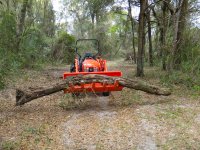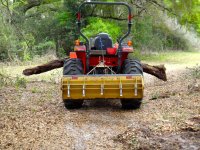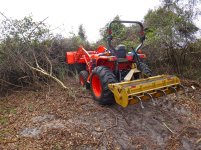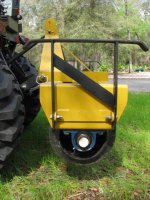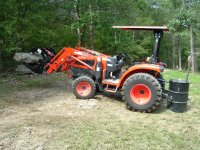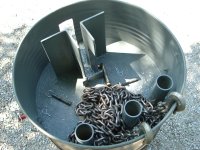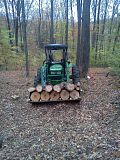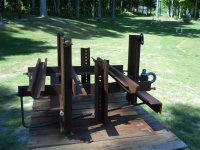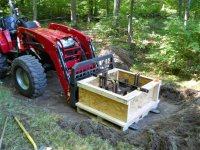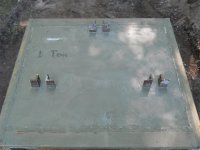jodebg
Platinum Member
I need to build a rear ballast box for my Kubota B7800 with FEL.
I have a couple of questions as to how to do this.
First, should the ballast weight be upright in design and the weight
centered on the tractor?
Or, is it better to build a horizontal ballast and spread the weight left and right?
If so, relative to the rear tires, how far out should the ballast go?
Should I keep the ballast box as close as possible to the tractor?
How much weight would be ideal for this Kubota model?
FEL lift capacity is around 780 lbs.
I should add that I am also thinking about filling the rear tires.
Do I need to take that additiional liquid weight in the tires into consideration?
Thanks.
I have a couple of questions as to how to do this.
First, should the ballast weight be upright in design and the weight
centered on the tractor?
Or, is it better to build a horizontal ballast and spread the weight left and right?
If so, relative to the rear tires, how far out should the ballast go?
Should I keep the ballast box as close as possible to the tractor?
How much weight would be ideal for this Kubota model?
FEL lift capacity is around 780 lbs.
I should add that I am also thinking about filling the rear tires.
Do I need to take that additiional liquid weight in the tires into consideration?
Thanks.
